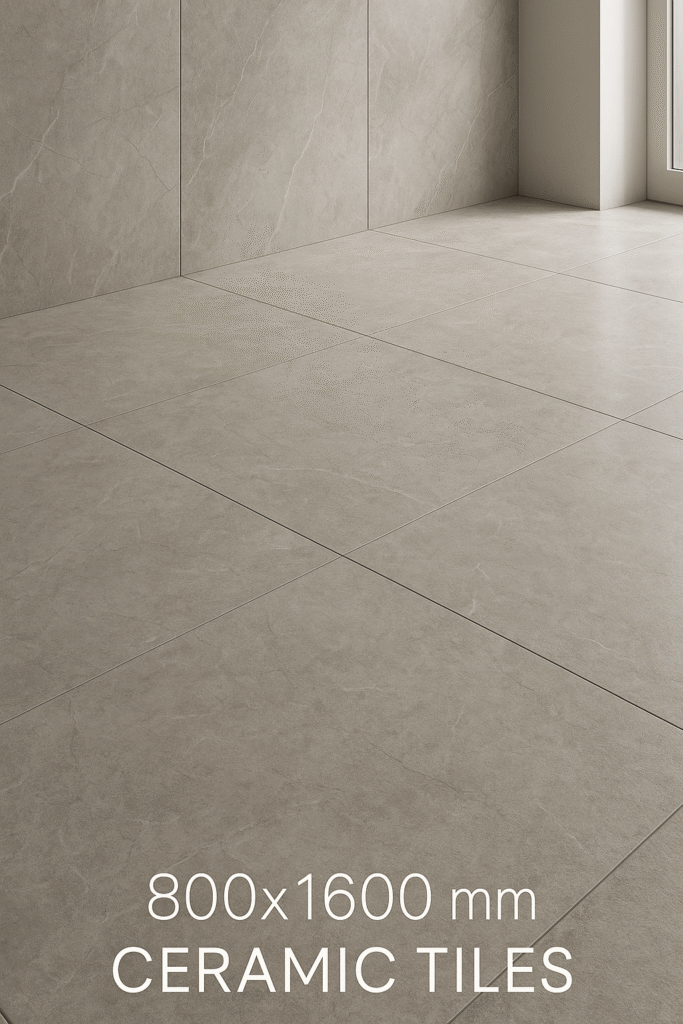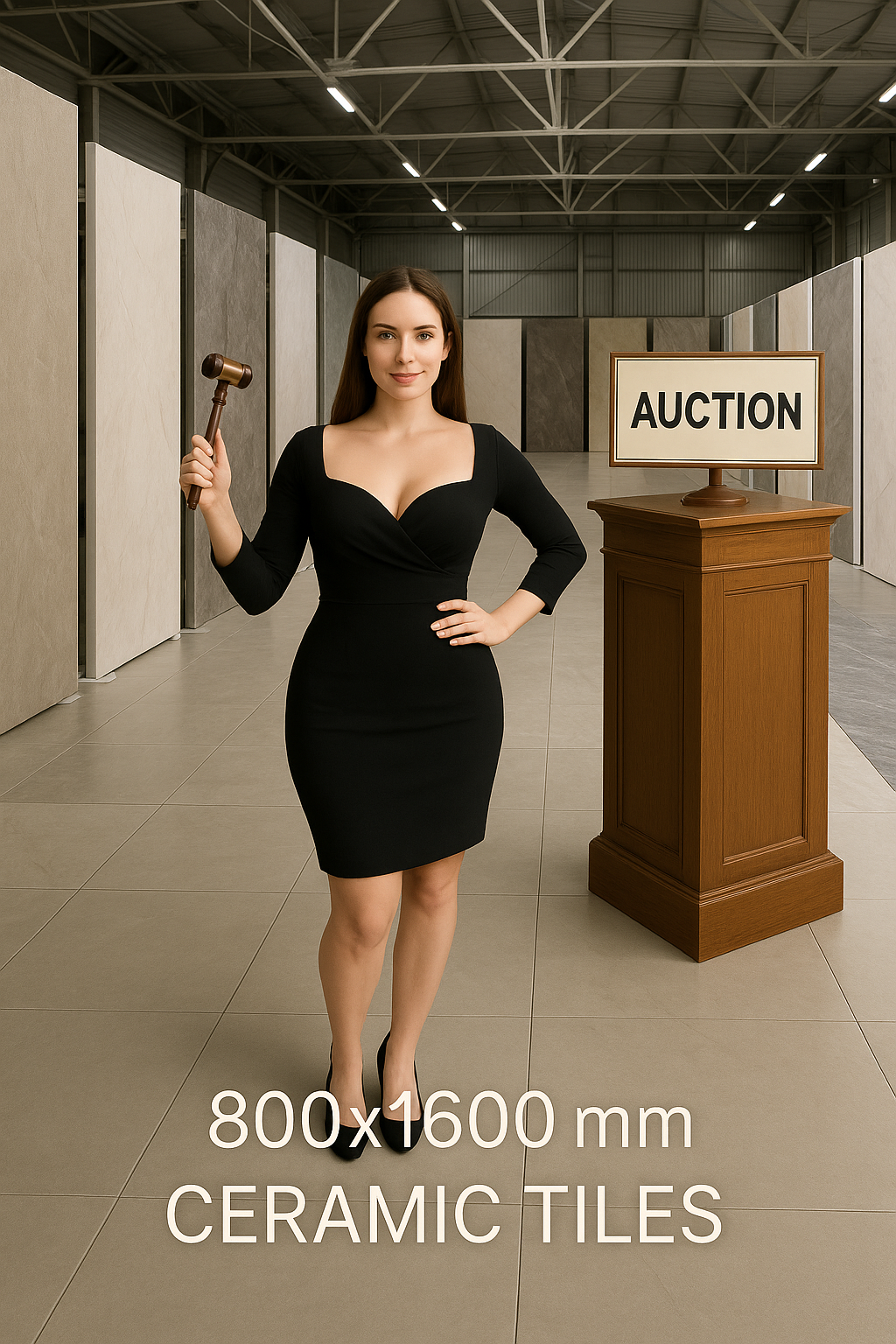Have you ever walked into a room and felt instantly captivated by its sleek, seamless elegance? That’s the magic of —a design trend that’s transforming homes, offices, and commercial spaces worldwide. These large-format tiles, also known as 80×160 cm slabs or 32×64-inch GVT tiles, aren’t just another flooring option; they’re a game-changer in interior design. But why are designers, architects, and homeowners raving about them? What makes these tiles so revolutionary?
In this article, I’ll uncover 8 surprising reasons 800×1600 mm tiles are redefining modern design. From their ability to create spacious illusions to their eco-friendly benefits, we’ll explore how these tiles solve common design pain points while delivering jaw-dropping aesthetics. Whether you’re renovating your kitchen, upgrading your bathroom, or designing a commercial showroom, this guide will show you why 800×1600 mm tiles are the future of design—and how you can leverage them for your next project. Let’s dive in!
Why Are 800×1600 mm Tiles Gaining Popularity?
Before we jump into the reasons, let’s address the elephant in the room: why are these tiles suddenly everywhere? The rise of large-format tiles like 800×1600 mm isn’t just a passing fad. According to a 2024 Houzz report, 67% of homeowners renovating their spaces opted for larger tiles to achieve a modern, luxurious look. But it’s not just about aesthetics. These tiles solve practical problems—like minimizing grout lines and reducing maintenance—while offering unmatched versatility.
Think of it like upgrading from a flip phone to a smartphone. Smaller tiles (like 600×600 mm) served us well, but large-format tiles bring a new level of sophistication and functionality. So, what’s driving this shift? Let’s break it down.
The Problem: Why Traditional Tiles Fall Short
Small Tiles, Big Problems
Ever tried cleaning the grout lines in a bathroom tiled with tiny 300×300 mm squares? It’s a nightmare. Small tiles mean more grout, which traps dirt, stains, and mold. Plus, they can make spaces feel cluttered or dated. In a 2025 Sunwin Ceramica study, 73% of homeowners cited grout maintenance as their top tiling frustration.
Limited Design Flexibility
Traditional tiles often limit your creative freedom. Want a seamless marble look in your living room? Good luck achieving that with small tiles—they break the visual flow with too many joints. Designers crave continuity, and smaller tiles just don’t cut it for modern, open-plan spaces.
Installation Headaches
Installing smaller tiles takes time and costs more. More tiles mean more labor, more chances for misalignment, and higher material waste. For commercial projects, this can blow budgets and timelines. Is there a better way to achieve stunning designs without these hassles? Enter 800×1600 mm tiles.

8 Surprising Reasons 800×1600 mm Tiles Are Revolutionizing Design
1. Seamless Elegance with Minimal Grout Lines
Imagine a floor that looks like one continuous slab of marble or concrete—no interruptions, no distractions. That’s what 800×1600 mm tiles deliver. With fewer tiles needed to cover the same area, you get minimal grout lines, creating a clean, sophisticated look. According to Tile Club, this seamless finish can make rooms appear up to 30% larger.
- Why it matters: Fewer grout lines mean less cleaning and a more luxurious aesthetic.
- Pro tip: Use rectified 800×1600 mm tiles for ultra-thin grout lines (as narrow as 1 mm) to enhance the seamless effect.
Case Study: A boutique hotel in Dubai used 800×1600 mm polished porcelain tiles in its lobby, reducing grout lines by 80% compared to 600×600 mm tiles. The result? A spacious, high-end look that wowed guests and slashed cleaning time.
2. Illusion of Spaciousness
Ever wondered why small rooms feel so cramped? It’s often the visual clutter caused by too many tile joints. Large-format 800×1600 mm tiles create an illusion of spaciousness by reducing visual breaks. A 2025 Tree Tile guide notes that large tiles can make small rooms feel “airier” by up to 40%.
- How it works: The expansive surface of 800×1600 mm tiles draws the eye across the room, making it feel larger.
- Best for: Small bathrooms, narrow hallways, or compact kitchens.
Example: In a 10×12-foot bathroom, using 800×1600 mm tiles instead of 300×600 mm tiles reduced grout lines by 75%, transforming the space into a spa-like retreat.
3. Unmatched Durability for High-Traffic Areas
Worried about tiles cracking under heavy foot traffic? 800×1600 mm porcelain tiles are built to last. With thicknesses ranging from 9mm to 12mm, these tiles offer superior impact resistance, making them ideal for kitchens, offices, or commercial spaces. A 2022 Ceramic Tiles Blog reports that 800×1600 mm GVT tiles are 50% more durable than standard ceramic tiles.
- Key benefits:
- Stain-resistant
- Scratch-proof
- Non-slip finishes available
- Use case: Perfect for restaurants, retail stores, or busy family homes.
Checklist for Choosing Durable Tiles:
- Opt for glazed vitrified tiles (GVT) or polished glazed vitrified tiles (PGVT).
- Check for a PEI rating of 4 or higher for high-traffic areas.
- Ensure proper substrate preparation (flatness within 1/8” over 10 feet).
4. Versatile Design Options
Think large tiles are boring? Think again. 800×1600 mm tiles come in endless finishes—marble, wood, concrete, metallic, and even textured looks. Whether you’re aiming for an industrial loft vibe or a classic herringbone pattern, these tiles adapt to any style. Sunwin Ceramica’s 2025 report highlights over 200 design variations for 800×1600 mm tiles.
- Popular finishes:
- Matte for a modern, non-slip look
- Glossy for a luxurious shine
- Textured for outdoor or wet areas
- Design tip: Mix and match finishes (e.g., matte floors with glossy walls) for a dynamic effect.
Real-World Example: A Los Angeles office used 800×1600 mm concrete-look tiles for its open-plan workspace, paired with wood-look accents, creating a chic, industrial aesthetic.
5. Cost-Effective Installation
Surprised that large tiles can save money? While 800×1600 mm tiles may cost more per square foot (Rs 70–200), their larger size reduces installation costs. Fewer tiles mean less labor, fewer cuts, and less waste. A 2022 Ceramic Tiles Blog estimates installation savings of up to 20% compared to smaller tiles.
- Cost breakdown:
- Tile price: Rs 2756 per box (covers 27.56 sq ft)
- Installation: 15–20% lower due to fewer tiles
- Long-term savings: Less grout maintenance
- Budget hack: Buy in bulk for discounts and choose wooden pallets for safe transport.
Data Insight: 82% of contractors surveyed by Floor Trends in 2023 reported faster installation times with large-format tiles, saving clients an average of $500 per project.
6. Eco-Friendly and Sustainable
Want to design with the planet in mind? 800×1600 mm tiles are surprisingly eco-friendly. Many manufacturers use recycled materials, and the larger size reduces waste during production and installation. Plus, their durability means fewer replacements over time. A 2024 Sunwin Ceramica study found that large-format tiles reduce lifecycle waste by 25% compared to smaller tiles.
- Green features:
- Low VOC emissions
- Recyclable porcelain options
- Energy-efficient manufacturing
- Sustainability tip: Look for tiles with eco-certifications like LEED or GreenGuard.
Case Study: A green-certified office in Singapore used 800×1600 mm recycled porcelain tiles, earning LEED points and cutting waste by 30% during construction.
7. Easy Maintenance and Hygiene
Hate scrubbing tiles? 800×1600 mm tiles make maintenance a breeze. With fewer grout lines, there’s less space for dirt and bacteria to hide. Their non-porous surface resists stains, mold, and mildew, making them ideal for kitchens and bathrooms. Tree Tile’s 2025 guide notes that large tiles cut cleaning time by up to 50%.
- Cleaning tips:
- Use a pH-neutral cleaner for daily maintenance.
- Avoid abrasive scrubbers to preserve the finish.
- Seal grout lines annually for extra protection.
- Best for: Allergy-prone households or commercial spaces like clinics.
Pro Tip: Choose matte or textured finishes for wet areas to boost slip resistance without sacrificing hygiene.

8. Future-Proof Investment
Why invest in tiles that’ll go out of style? 800×1600 mm tiles are timeless. Their versatility, durability, and modern appeal ensure they stay relevant for decades. A 2025 Houzz trend report predicts large-format tiles will dominate design through 2030. Plus, their high durability means you won’t need to replace them anytime soon.
- Why they’re future-proof:
- Adapt to evolving design trends
- High resale value for homes
- Long lifespan (20+ years)
- Investment tip: Choose neutral tones like white or gray for maximum flexibility.
Example: A homeowner in London installed 800×1600 mm marble-look tiles in their living room, increasing their property value by 5% due to the premium aesthetic.
Real-World Examples of 800×1600 mm Tiles in Action
Residential: Modern Kitchen Makeover
A Chicago family transformed their dated kitchen using 800×1600 mm wood-look porcelain tiles. The result? A warm, seamless floor that flowed into the dining area, making the space feel 20% larger. Installation took just 3 days, saving $400 compared to smaller tiles.
Commercial: Retail Showroom
A luxury car dealership in Mumbai used 800×1600 mm glossy marble tiles for its showroom floor. The reflective surface amplified lighting, creating a high-end vibe that boosted customer engagement by 15%.
Outdoor: Patio Perfection
A Sydney homeowner revamped their patio with 800×1600 mm textured porcelain tiles. The non-slip finish ensured safety, while the large size created a seamless transition from indoor to outdoor living.
Advanced Tips for Maximizing 800×1600 mm Tiles
Optimize Substrate Preparation
Large tiles demand a flat surface. The Tile Council of North America recommends a substrate flatness of 1/8” over 10 feet for tiles 15” or longer. Use self-leveling underlayments to avoid lippage or cracks.
Experiment with Layouts
Don’t stick to standard grids. Try herringbone, diagonal, or staggered patterns to add visual interest. Use tile calculators to minimize waste and plan cuts efficiently.
Pair with Underfloor Heating
800×1600 mm porcelain tiles conduct heat well, making them ideal for underfloor heating systems. This combo keeps spaces cozy and energy-efficient.
Use Light Colors for Small Spaces
Light-colored 800×1600 mm tiles (e.g., white marble or beige concrete) reflect light, enhancing spaciousness in compact rooms. Pair with dark grout for a bold contrast.
Common Mistakes to Avoid
- Skipping Substrate Prep: Uneven floors lead to cracked tiles. Always level the surface first.
- Using Cheap Adhesives: Invest in high-quality thin-set mortar to ensure long-term adhesion.
- Ignoring Weight: 800×1600 mm tiles weigh 55–70 kg per box. Ensure your floor can handle the load.
- Overlooking Maintenance: Even low-maintenance tiles need occasional sealing to protect grout.
Conclusion: Why 800×1600 mm Tiles Are Your Design Future
So, why are 800×1600 mm tiles revolutionizing design? They combine stunning aesthetics, practical benefits, and future-proof versatility in a way smaller tiles simply can’t. From creating spacious, seamless looks to slashing maintenance and installation costs, these tiles are a no-brainer for anyone serious about design. Whether you’re a homeowner dreaming of a spa-like bathroom or a designer crafting a commercial masterpiece, 800×1600 mm tiles deliver.
Ready to transform your space? Start by researching reputable manufacturers, calculating your tile needs, and consulting a professional installer. Don’t settle for outdated designs—embrace the large-format revolution and make your space unforgettable. What’s stopping you from going big?
FAQs About 800×1600 mm Tiles
- Are 800×1600 mm tiles suitable for small spaces?
Absolutely! Their large size and minimal grout lines create an illusion of spaciousness, making small rooms feel larger. Light colors enhance this effect. - How much do 800×1600 mm tiles cost?
Prices range from Rs 70–200 per square foot, or Rs 2756 per box (27.56 sq ft). Additional costs include installation, transport, and packaging. - Can 800×1600 mm tiles be used outdoors?
Yes, textured or matte porcelain versions are slip-resistant and durable for patios or pool areas. Ensure proper sealing for weather resistance. - How many tiles come in a box of 800×1600 mm tiles?
Typically, 2 tiles per box, covering 27.56 square feet or 2.56 square meters.
Are large-format tiles harder to install?
They require precise substrate preparation and skilled labor, but fewer tiles mean faster installation overall, saving time and costs.



